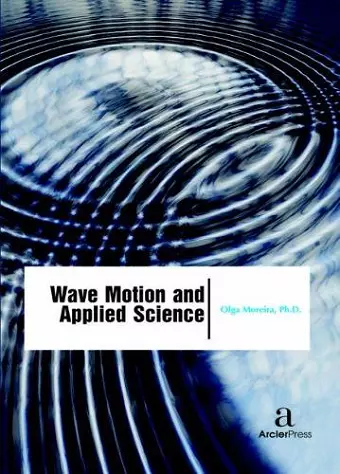Wave Motion and Applied Science
Format:Hardback
Publisher:Arcler Education Inc
Published:30th Nov '16
Currently unavailable, and unfortunately no date known when it will be back

Waves can be divided into two main groups, mechanical and electromagnetic waves. Mechanical waves require a medium to propagate (i.e. these cannot travel through a vacuum). These can be both longitudinal (particles displacement is parallel to the direction of wave propagation) transverse (particle displacement is perpendicular to the direction of wave propagation) waves which properties and characteristics depend on the restoring forces between particles combined with the inertia of the particles. Examples of mechanical waves are acoustic waves, seismic waves and water waves(wind waves). Electromagnetic waves do not require a medium to propagate they consist of periodic oscillations of electrical and magnetic fields. These are transverse waves in free space (vacuum) and in isotropic, homogeneous media. They are generated whenever charged particles are accelerated and can be characterized by either the frequency or wavelength. Examples are radio waves, microwaves, X-rays, light and gamma waves. There are also gravitational waves which are similar to electromagnetic waves in that they also travel through free space as the result of oscillations or movement in gravitational fields. The first part of this book is centered on the propagation of sea waves and the coupling between wave processes in the ocean, atmosphere, and the solid Earth [1-9]. It starts with a numerical simulation of water waves and interaction between these waves and coastal structures (breakwaters). Next, it overviews transoceanic propagation tsunami waves and ocean infragravity as well as challenge behind detection and the understanding of high amplitude sea waves generation mechanism. It ends with the analysis of long-period ground motions, earthquakes in Arabian Gulf and Kanto Basin. The second part of the book focuses on magnetoacoustic waves in the sun’s atmosphere and the gravitational waves in space [10-12]. The third part returns to Earth by focusing on the understanding of electromagnetic waves and waveguide propagation for applications in microcircuits design, electro-mechanical systems, spintronics and many-body quantum systems [13-17]. The last part includes the different applications of wave motion theory in the biomedical engineering, neurosciences, biomechanics and wave-like motions in nature [18-22].
ISBN: 9781680943696
Dimensions: unknown
Weight: unknown
317 pages